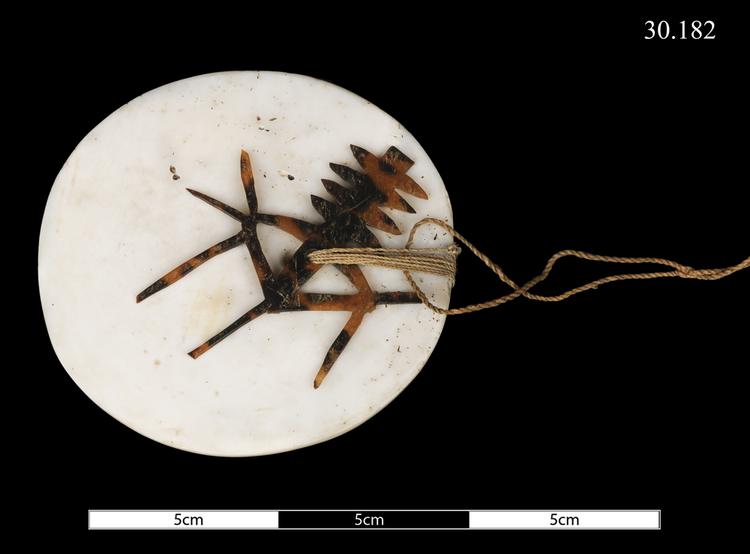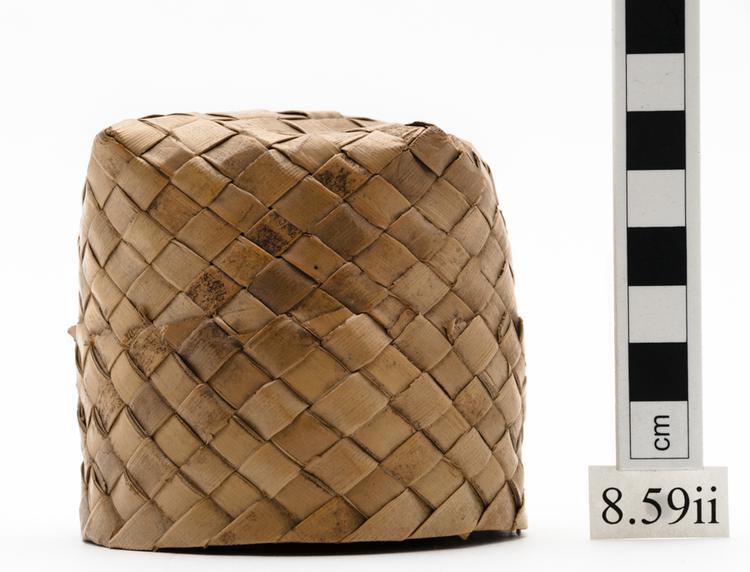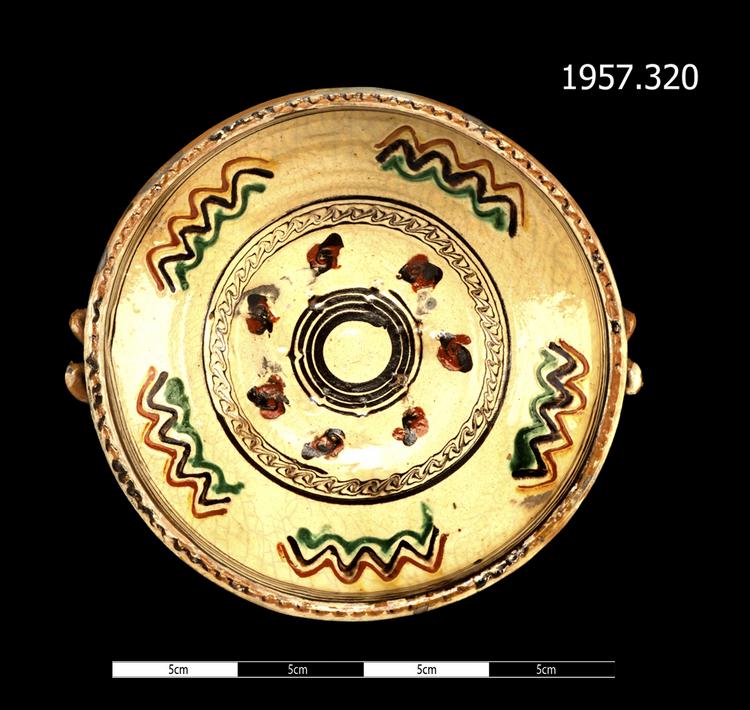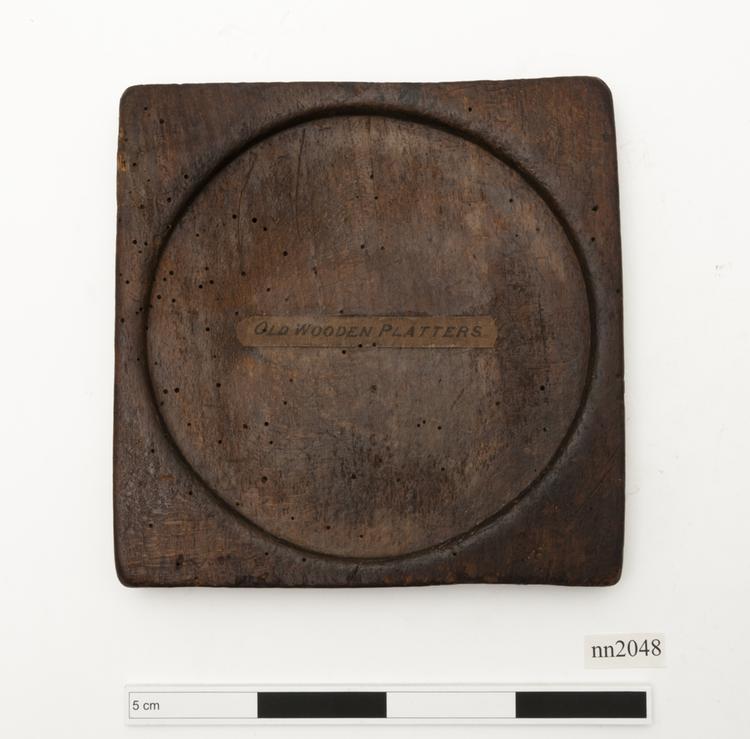
Discoidal breast ornament, tema, cut and ground from a Tridacna shell, which is overlaid with a finely cut fretwork motif of an abstracted, multi-winged and multi-beaked Frigate-bird.
Breast Ornament, Tema, Santa Cruz Group, Solomon Islands, Central Melanesia The tema of the Santa Cruz islands is the easternmost example of the composite white shell and turtleshell disk ornaments that were formerly produced throughout Melanesia, and a generally termed kapkap. Here a disk of Giant Clam (Tridacna gigas) is overlaid with a cut-out shape in contrasting turtleshell (Eretmochelys imbricata), just as we find in the other types of kapkap. While the other variations of kapkap are covered in circular disks of turtleshell cut out in various geometric or otherwise regular shapes, the Santa Cruz tema instead features strange pointed motifs combining the wings and tail feathers of a predatory and piratical seabird called the Frigate bird (Fregata spp.). Some examples are very simple silhouettes, but others, such as this example here, are stranger and more complex. This ‘bird’ has multiple wings, half a tail, and a strange serrated column of beaks where its head ought to be. This is like no recognisable bird, but the idealised qualities of the Frigatebird are exaggerated in multiple: aggressive, a successful fisherman, agile in the air and dominant over other seabirds. Shell, turtleshell. Late 19th Century. Formerly in the private collection of Captain A. E. Straw.






